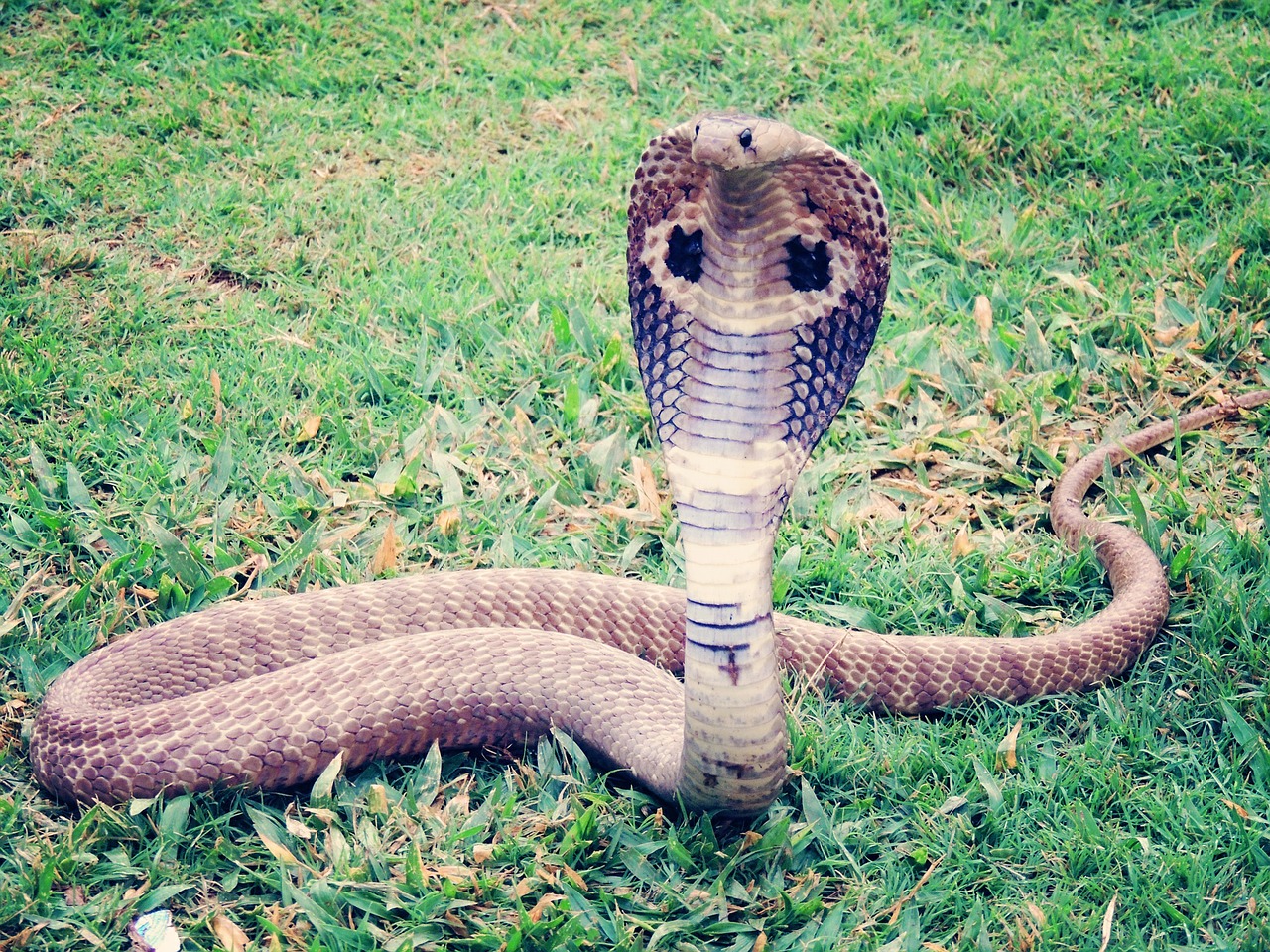Scientific classification: Cobras belong to the family Elapidae. True cobras are in the genus Naja. Water cobras are classified in the genus Boulengerina and burrowing cobras in the genus Paranaja.
Introduction
The Cobra snake is the name for a group of venomous snakes known for their hooded threat display and dangerous bites. Cobras are found in Africa and Asia, king cobras and they have held a special place in human culture from ancient Egypt to modern India. About 30 species of snakes are commonly called cobras, including the king cobra (the world’s largest poisonous snake) and varieties that can “spit” venom. The name cobra comes from a Portuguese word for “snake” (short for cobra de capello “snake with a hood”). Cobras belong to the same snake family (Elapidae) as coral snakes and mambas. Not all types of snakes popularly called cobras may be directly related to the same ancestors. Rearing up to display a flattened neck that forms a hood and spraying venom are abilities that apparently evolved more than once in different members of the elapid family of snakes.
Types of Cobra
Species of cobra differ from each other in size, habits, and range. The term “true cobra” is used for species that belong to the genus Naja, notable for proportionately larger hoods with an eye-pattern on the back. Species range from 1 and 1.5 m (40 and 60 in) to 3 m (10 ft) long. True cobras are found in much of Africa, Asia, and parts of the Middle East.
Water cobras are found in Central Africa and grow to 1.8 to 2 m (6 to 7 ft) in length. Burrowing cobras, also called many-banded snakes, live in parts of the Congo region and in Cameroon, and grow to 60 cm (2 ft). Tree cobras are found in tropical forests in central and west Africa and average 2 to 2.7 m (7 to 9 ft) in length.
The king cobra, also known as the hamadryad, is the longest of all poisonous snakes, averaging 3.6 m (12 ft) but sometimes reaching 5.4 m (18 ft) in length. It is found in southern regions of Asia, including India, China, king cobras, Vietnam, Malaysia, Indonesia, and the Philippines.
Desert black cobras live in deserts in the Middle East, and can reach 1.3 m (4 ft) in length. Shieldnose cobras, also called African coral snakes, are 60 to 76 cm (2 to 2.5 ft) long, and occur in dry, sandy areas in southern Africa. Ringhals (also spelled rinkhals) are found in southern Africa and average about 1 m (40 in) in length, sometimes reaching 1.5 m (5 ft).
Conservation
No cobra species are currently considered threatened with extinction. However the Convention on International Trade in Endangered Species of Wild Fauna and Flora (CITES) lists 11 species of true cobras (genus Naja) and the king cobra as animals on Appendix II, king cobras which indicates species that require an export permit for trade.

